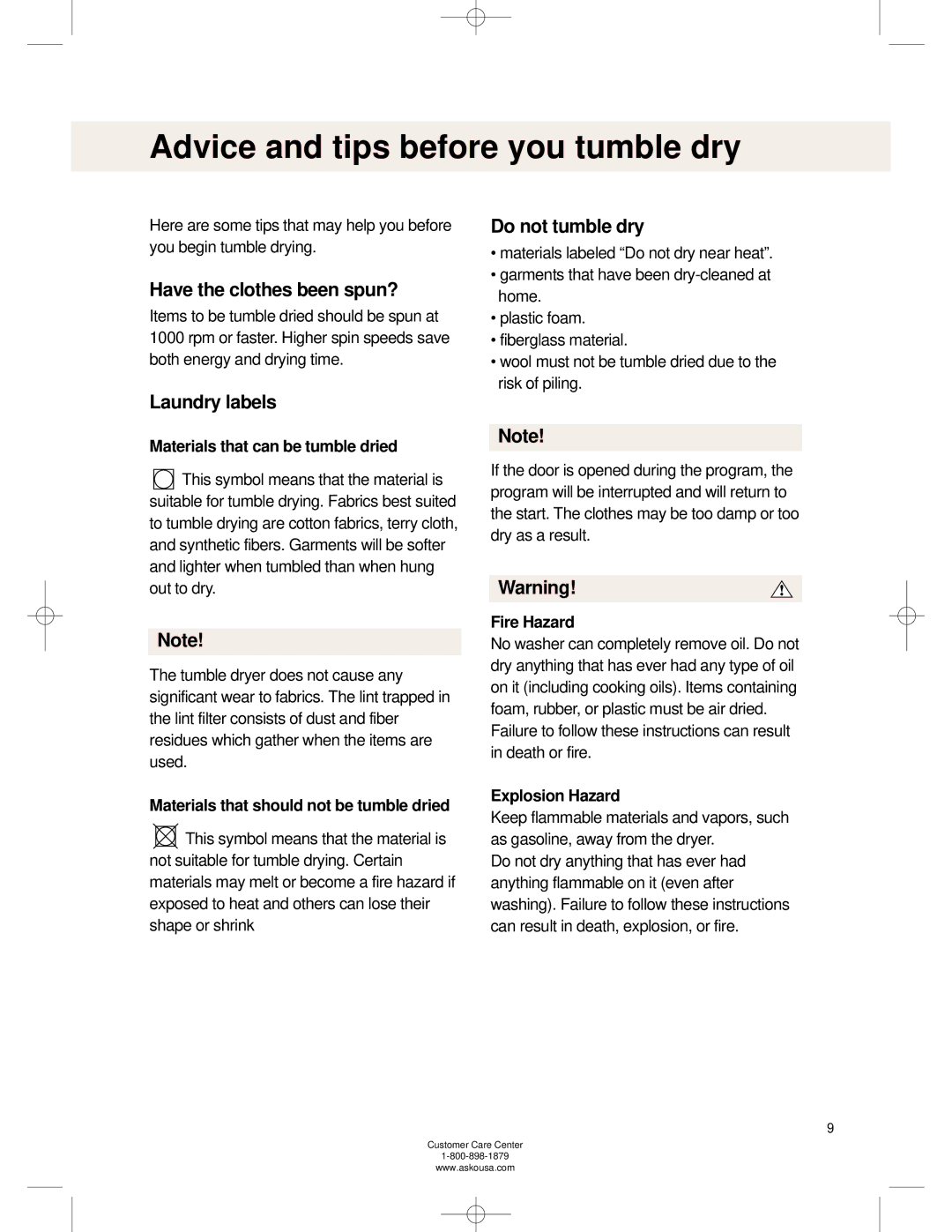
Advice and tips before you tumble dry
Here are some tips that may help you before you begin tumble drying.
Have the clothes been spun?
Items to be tumble dried should be spun at 1000 rpm or faster. Higher spin speeds save both energy and drying time.
Laundry labels
Materials that can be tumble dried
![]() This symbol means that the material is suitable for tumble drying. Fabrics best suited to tumble drying are cotton fabrics, terry cloth, and synthetic fibers. Garments will be softer and lighter when tumbled than when hung out to dry.
This symbol means that the material is suitable for tumble drying. Fabrics best suited to tumble drying are cotton fabrics, terry cloth, and synthetic fibers. Garments will be softer and lighter when tumbled than when hung out to dry.
Note!
The tumble dryer does not cause any significant wear to fabrics. The lint trapped in the lint filter consists of dust and fiber residues which gather when the items are used.
Materials that should not be tumble dried
![]() This symbol means that the material is not suitable for tumble drying. Certain materials may melt or become a fire hazard if exposed to heat and others can lose their shape or shrink
This symbol means that the material is not suitable for tumble drying. Certain materials may melt or become a fire hazard if exposed to heat and others can lose their shape or shrink
Do not tumble dry
•materials labeled “Do not dry near heat”.
•garments that have been
•plastic foam.
•fiberglass material.
•wool must not be tumble dried due to the risk of piling.
Note!
If the door is opened during the program, the program will be interrupted and will return to the start. The clothes may be too damp or too dry as a result.
Warning!
Fire Hazard
No washer can completely remove oil. Do not dry anything that has ever had any type of oil on it (including cooking oils). Items containing foam, rubber, or plastic must be air dried.
Failure to follow these instructions can result in death or fire.
Explosion Hazard
Keep flammable materials and vapors, such as gasoline, away from the dryer.
Do not dry anything that has ever had anything flammable on it (even after washing). Failure to follow these instructions can result in death, explosion, or fire.
9
Customer Care Center
www.askousa.com
